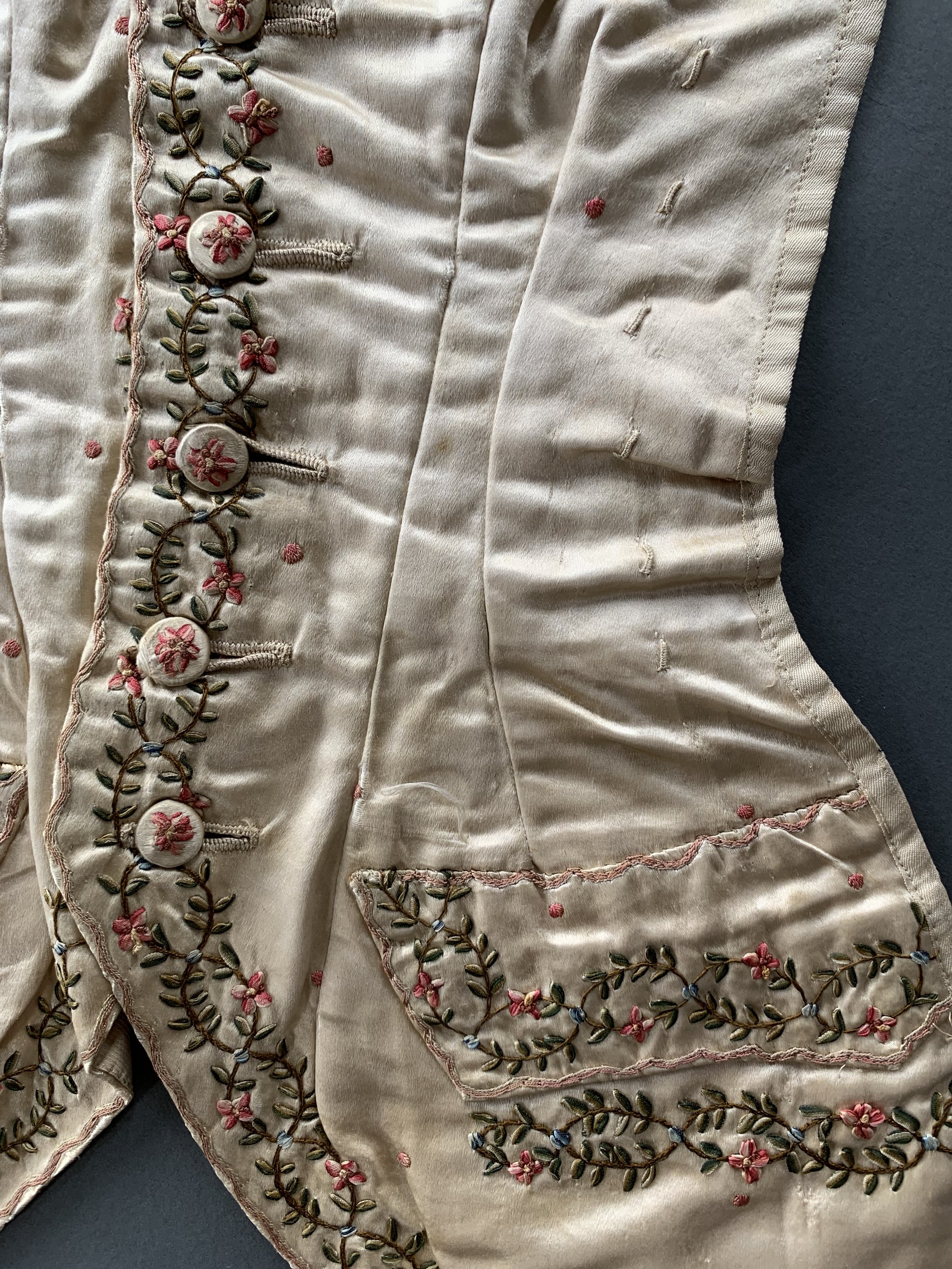
A transformation
A transformation
By Jenny Frances Mearns project volunteer
Repurposing is the transformation of a garment or object into a new form, often serving a different purpose or function from the original object. The practice of repurposing garments is a clever and thrifty way of creating something new using minimal materials and resources, making it both a sustainable and creative discipline.
Whilst researching objects within the fashion collection for the Fashioning Our World project, we discovered a fantastic example of repurposing: a women’s bodice front repurposed in the late nineteenth century, which had originally started life as a man’s waistcoat in the eighteenth century. The bodice front would have formed the central panel of a woman’s bodice, allowing the wearer to easily change the overall look of their outfit by simply swapping out this piece. During the 1880s it was fashionable for women’s bodices to feature contrasting central panels, such as this repurposed example we have here in the collection at The Salisbury Museum.
In order to create the piece we see today, in the late nineteenth century a talented seamstress carefully planned how to go about transforming the waistcoat into a bodice front for a woman’s gown.
The waistcoat was initially constructed in the mid eighteenth century, with the embroidery, buttons, collar, and pocket flaps all belonging to the original garment. Indeed, the waistcoat was most likely chosen as a candidate for repurposing as the fabric and embroidery are of very high quality and would certainly have been expensive to produce.
The front pieces of the original male waistcoat have been used, with the buttons and buttonholes remaining intact from the original waistcoat. On each side of the garment, two darts (vertical tucks of fabric to create shaping) have been stitched, to tailor the waistcoat to the female figure. The edges of the panels have been finished with fabric binding, so all raw edges of the fabric are neatly and professionally encased.
Looking closely at the garment, down each side can be seen neatly hand-stitched loops in discreet cream thread. These loops allow the newly repurposed bodice front to be worn, by attaching vertically onto hooks either side of a woman’s bodice.
Although this bodice front was repurposed in the late nineteenth century, the practice of interchangeable bodice fronts was very popular in the seventeenth and eighteenth centuries, with central panels called stomachers. Whilst some stomacher’s had ties or tabs to attach them to the bodice, it was common for them to be temporarily pinned into place when the wearer was dressing and unpinned later during undressing.


